Although mercifully excluded from this year’s Eurovision “song” “contest” (lol), Russia is still the first-place contestant in the eternal Eurosanctions competition.
If you tally up all the Euro and Hamburgerland-imposed economic restrictions, Moscow is the lucky winner of 10,128 sanctions—of which 7,000 have been introduced in the last three months.
How have 10,128 sanctions impacted daily life in Russia? What will happen to all the foreign-owned assets and businesses in the country? What’s the deal with inflation? The ruble? Import substitution? Why are degenerate neoliberals still allowed to formulate economic policy? How will Edward collect his Substack rubles now that Russia has been unplugged from SWIFT? These are all very good questions.
Obviously there’s a lot to unpack here. Let’s start with nationalization.
A quick refresher: shortly after Russia launched its “special operation” in Ukraine, the United States and its Eurovision karaoke partners seized around half of Moscow’s foreign exchange reserves. Daylight robbery, really.
Naturally, this greatly angered Russia. And soon many prominent Russian politicians and pundits began demanding retaliatory thievery. The plan was simple: appropriate the assets of western companies that left Russia and turn their foreign-owned businesses into government-operated ventures.
It’s not so simple, though. You can nationalize a foreign-owned car factory, but what do you do with it? That factory may now be yours, but the foreign car models aren’t.
Plus, is it really Taco Bell’s fault that Joe Biden stole all of Russia’s dollars? Let’s be honest: not really. And so it would be morally wrong to commandeer the tacos. (There is no Taco Bell in Russia, by the way.)
It’s a sticky situation. In Moscow alone, around 200,000 Russians could lose their jobs due to the exit of foreign companies. That would be bad.
The Russian government has sent mixed signals about how it intends to deal with this problem. We will examine three high-profile examples below.
McDonald’s: I’m Rebrandin’ It
Sorry to have to report this but many citizens of the Russian Federation are in love with American anus-burger (not a typo) chain “McDonald’s.” When your humble Moscow correspondent lived in rural Bashkiria, his friends would drive close to an hour just to patronize the closest Golden Arches. Sigh.
So when McDonald’s announced it was shutting its doors in Russia, we celebrated. We knew it was for the Greater Good.
But the celestial vision of a McDonald’s-free Russia was always a cruel mirage. Out of 850 Mickey Ds in Russia, 133 decided that instead of closing, they would… not close. One out of every six McDonald’s “restaurants” in Russia remains fully operational.
And soon every McDonald’s in Russia will return to serving McTriple Bypasses: the company is selling its restaurants to an existing McDonald's licensee. They will be “de-arched,” rebranded and then will reopen in mid-June with the exact same menu.
“The restaurant chain and menu will be preserved, as will jobs. More than 90% of suppliers are Russian, cooperation with them will continue. In fact, only the name will go away,” the company said in a statement last week.
At least some jobs were saved. But is this the western hamburger-purge we all hoped for? No, it is not.
Cool Cola
Coca-Cola was one of the Big Brands that exited Russia. Unfortunately, the sugar slurry will continue to haunt the Fatherland.
Russian beverage manufacturer Ochakovo—known primarily for its kvass, which is like… bread water? It’s good, try it—has started to sell analogues of Coke, Fanta and Sprite.
Try and guess what these sugary poisons are called. Just take a guess. Try.
COOL COLA, FANCY, STREET.
Take the wheel, Katyusha:
The bottle has not changed much in shape—only the label is different, on which the letters C, F and S are used instead of the usual logos, depending on the type of drink. The color scheme also remained unchanged. Ochakovo said that the taste of the new soda does not differ from “classic favorite soft drinks.”
In the description of the products presented on the site, it is said that all of them “perfectly quench your thirst and allow you to refresh yourself.” […]
On the one hand, perhaps it is worth rejoicing—the import substitution of American soda is evident. It would be better if this soda went away without such a replacement, and instead of it, more normal kvass and natural juices appeared… [These new sodas] are the same muck.
Your humble Moscow correspondent has acquired samples of Cool Cola, Fancy and Street, and will publish the results of our intensive taste tests in the coming hours.
Anyway: Cool Cola—not nationalizaiton. Technically import substitution? Whatever.
Moskviched
Finally, we reach an actual example of nationalization.
On May 16, Moscow Mayor Sergey Sobyanin announced the purchase of Renault’s stake in a car plant located in the city, following the French automaker’s decision to leave Russia. (The plant was acquired for a symbolic 1 ruble, according to reports.)
So far so good. However, the deal was widely mocked on the Russian Internet after it was revealed Sobyanin would resurrect Moskvich, a Soviet brand that disappeared in the early 90s.
Yes, there were memes.
It shouldn’t really matter what the brand is. As long as they make cars, it’s cool. We need to add a small footnote here though: according to multiple reports, the ex-French car plant, now working under a Soviet brand, will produce… Chinese automobiles. Yes.
While Renault has permanently transferred ownership of its Moscow plant to the Russian government, it has inked a separate deal that will allow it to buy back its stake in an AutoVAZ plant in Samara, should it choose to do so in the next six years. [Thank you to valued reader Stanley Sheppard for the correction/clarification! — Edward]
By the way: Sobyanin revealed that eventually he wanted to start producing electric cars at his fancy (not the soda) nationalized auto plant.
KAMAZ will become the main technological partner of the revived Moscow Automobile Plant Moskvich. At the first stage, the production of classic cars with an internal combustion engine will be organized, and in the future—electric cars.
Strange but true: The Russian government previously signaled that it was interested in phasing out “old” cars. The reason? “Safety.”
We should say that we do not envy the Russian government’s task of restructuring huge sections of the economy. Probably there will be no easy fixes. Probably there will be pain. But hopefully it’ll all work out in the end.
Strange and historic times, friends.
Anyway. Instead of worrying about nationalization, why not watch the old Soviet classic, Moscow Does Not Believe in Tears? Mosfilm even added English subtitles for you:

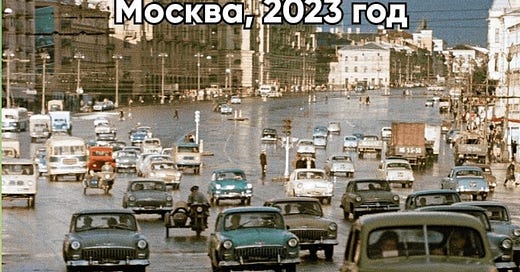





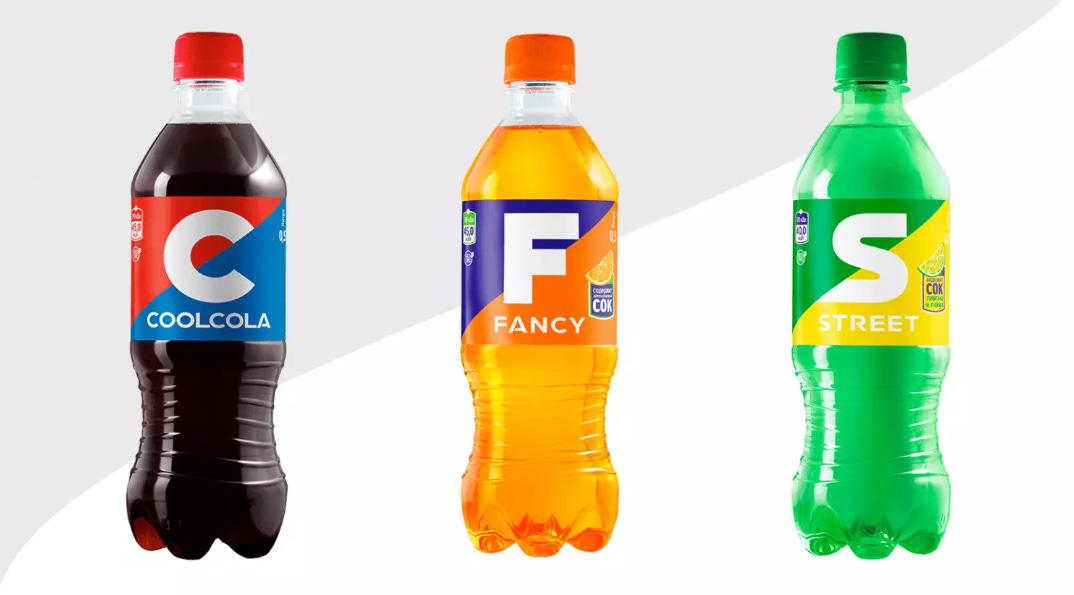
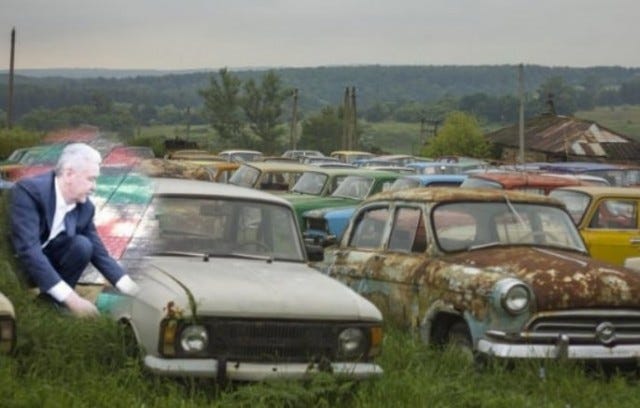

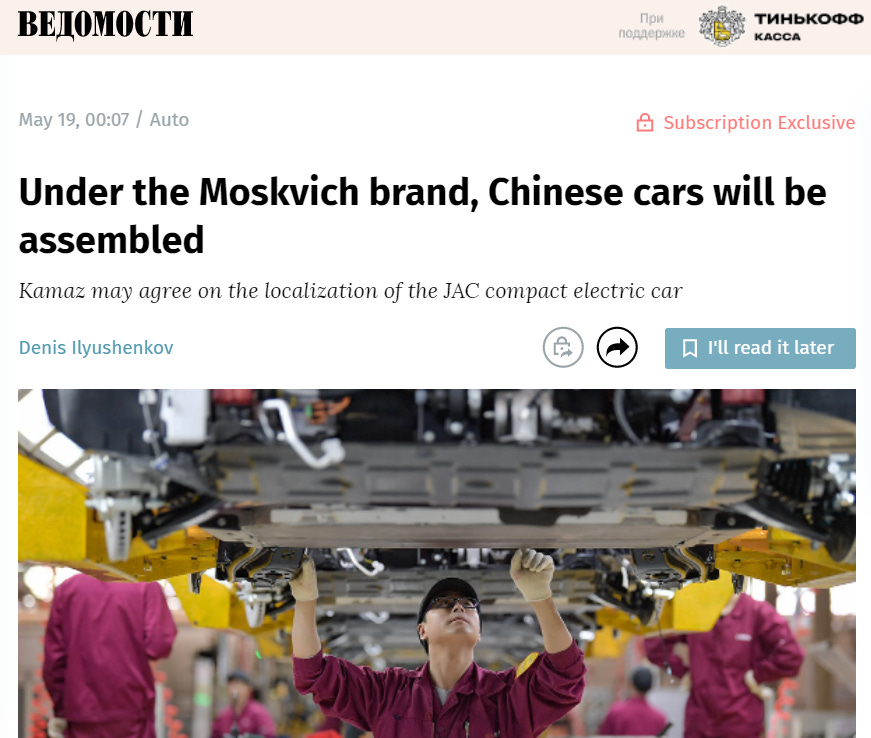
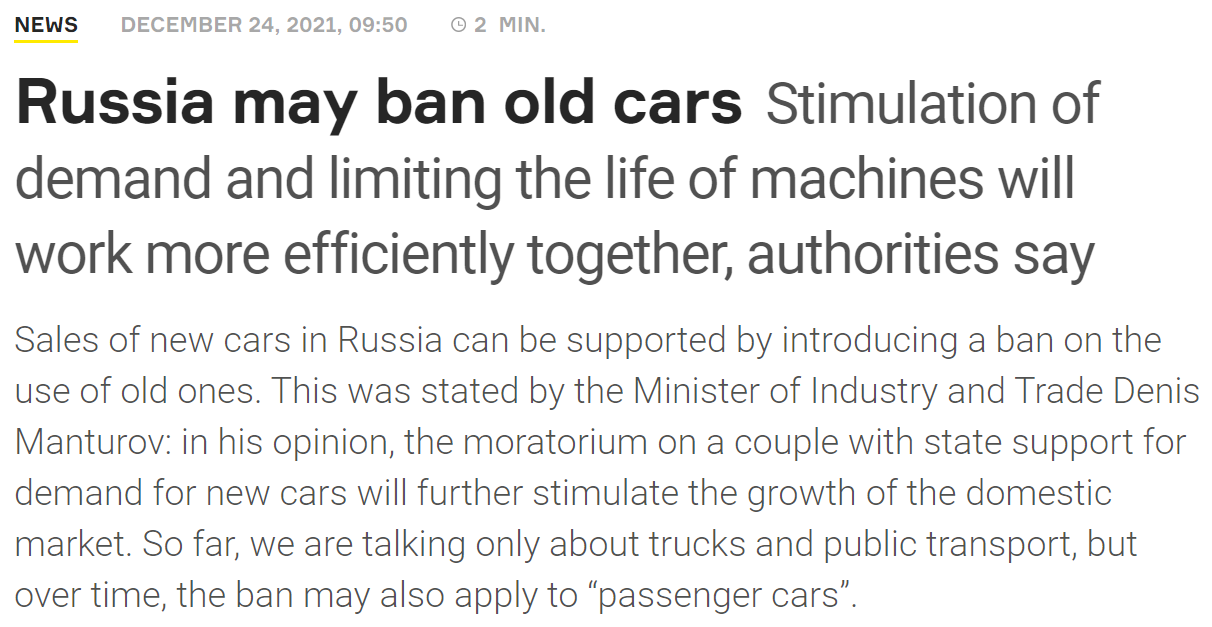
Great - and entertaining (: - reporting!
Great reporting Edward and I have to add in a great humorous style! Since I also watch closely current transformation of Russia under probably greatest economic pressure that it ever had (even Soviets weren't pressured as much and in 1930s US went into full scale participation in the famous Soviet industrialization project), I have to add a small correction. Moscow Renault assembly plant does not preserve the right for Renault to come back during 6 years. It is sold (gifted?) to the municipality of the city of Moscow. Period. No come back - otherwise it would have been impossible to get Chinese to partake in that project. It is AutoVAZ plant in Samara where Ladas are produced allowed Renault to re-engage if they'll decide to do so during 6 years. All new Ladas line-up was built using key parts, such as engines and transmissions, using Renault and Nissan components. But at least AutoVAZ has its own engines and transmissions used in older models that can be updated and used in production of the Russia's native passenger vehicles. Russia has a good line-up of pick-up trucks and big trucks, like KamAZ that are built using own parts, but passenger vehicle production was always lagging behind major global manufacturers in the use of modern technology. We'll see - perhaps current crisis gives them a chance to reimagine their auto industry. I have to say that US did that after 2008 crisis. Today's American cars are way better than those produced before 2008, dare to say they are more advanced than many of Japanese models.